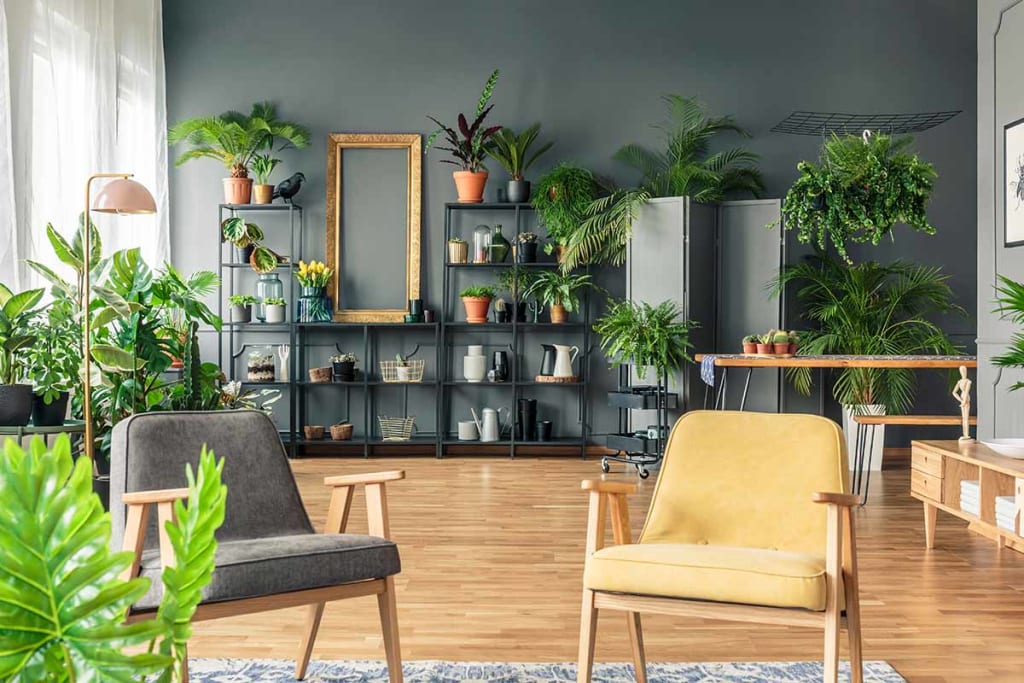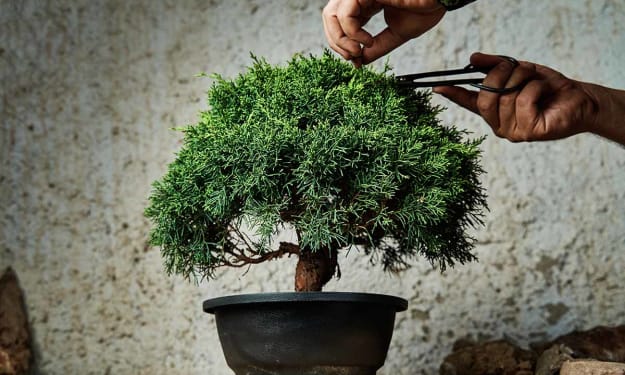Best Low-Light Plants for Your Home or Office
Best Low-Light Plants for Your Home or Office

Best Low-Light Plants for Your Home or Office
Bringing nature indoors has numerous benefits, from enhancing air quality to reducing stress and increasing productivity. However, not all living spaces or offices receive abundant natural light. If you're faced with dim conditions, fear not, as there are plenty of stunning and resilient plants that can flourish in low-light environments. In this comprehensive guide, we will explore the best low-light plants for homes and offices, along with essential care tips to ensure they thrive in these challenging conditions.
Understanding Low-Light Conditions
Before we delve into the best low-light plants, it's crucial to understand what constitutes a low-light environment. Low-light areas receive little to no direct sunlight or are located far from windows. This can be due to architectural design, obstructive structures, or a lack of access to natural light sources. While most plants require some sunlight to photosynthesize and grow, there are several species that have adapted to survive in dimly lit settings.
The Importance of Greenery in Indoor Spaces
Having plants indoors, even in low-light conditions, offers a multitude of benefits. Here are some of the key advantages of incorporating greenery into your home or office:
Air Purification: Many indoor plants act as natural air purifiers, removing harmful toxins such as formaldehyde, benzene, and xylene from the air, promoting a healthier living or working environment.
Stress Reduction: Studies have shown that being around plants can reduce stress levels, improve mood, and create a sense of well-being.
Enhanced Productivity: The presence of greenery in the workplace has been linked to increased productivity, creativity, and overall job satisfaction.
Noise Reduction: Certain plants can help absorb and reduce noise levels, making them particularly valuable in busy office settings.
Aesthetic Appeal: Adding plants to your space can elevate its aesthetics, creating a tranquil and inviting atmosphere.
Now that we understand the benefits of incorporating greenery into our indoor spaces, let's explore the best low-light plants that can thrive in dim environments.
Snake Plant (Sansevieria trifasciata)
The Snake Plant, also known as Mother-in-Law's Tongue, is a popular choice for low-light spaces due to its incredible hardiness and air-purifying properties. This striking plant features tall, upright leaves with attractive variegation patterns, adding a touch of elegance to any setting. Snake Plants can tolerate neglect and require minimal watering, making them ideal for busy homeowners or office managers.
ZZ Plant (Zamioculcas zamiifolia)
The ZZ Plant is another top contender for low-light conditions. With its glossy, dark green leaves, this plant can survive in virtually any light level, from bright indirect light to dimly lit corners. ZZ Plants are drought-tolerant and can go without water for extended periods, making them perfect for those who may forget to water their plants regularly.
Pothos (Epipremnum aureum)
Pothos, also known as Devil's Ivy, is a popular trailing plant renowned for its adaptability and lush, heart-shaped leaves. It can thrive in low to moderate light conditions, although it may lose some variegation in lower light levels. Pothos are low-maintenance and easy to propagate, making them an excellent choice for both beginner and seasoned plant enthusiasts.
Dracaena (Dracaena spp.)
Dracaenas are a diverse group of low-light plants, available in various shapes, sizes, and colors. Some common varieties include the Dracaena marginata, Dracaena fragrans, and Dracaena reflexa. These plants are known for their air-purifying qualities and can add a touch of tropical beauty to your space. While they prefer medium to bright indirect light, they can acclimate to low-light conditions with some care adjustments.
Peace Lily (Spathiphyllum spp.)
The Peace Lily is a classic houseplant known for its elegant white blooms and air-purifying capabilities. While they prefer medium to low light, Peace Lilies can tolerate darker corners and rooms without windows. Keep in mind that while they are relatively easy to care for, they do appreciate consistent moisture and occasional fertilization.
Cast Iron Plant (Aspidistra elatior)
As the name suggests, the Cast Iron Plant is virtually indestructible and can endure a wide range of conditions, including low light. With its broad, dark green leaves, it adds a touch of classic elegance to any interior space. This plant is an excellent option for those who struggle with keeping plants alive or those who want a resilient green companion in dimly lit areas.
Chinese Evergreen (Aglaonema spp.)
Chinese Evergreens are a family of plants with diverse foliage patterns, ranging from silvery greens to dark, luscious hues. They are well-suited for low-light environments and can withstand periods of drought. These beautiful plants will not only thrive but also enhance the aesthetics of any home or office.
Spider Plant (Chlorophytum comosum)
The Spider Plant is a popular choice for both novice and experienced plant lovers, thanks to its air-purifying properties and easy care. It can thrive in low to moderate light conditions, producing cascading baby spiderettes that add visual interest to the plant. Spider Plants prefer evenly moist soil and occasional misting to thrive in low-light settings.
Boston Fern (Nephrolepis exaltata)
If you're looking to add a touch of lush greenery to your low-light space, the Boston Fern is an excellent choice. While it prefers moderate to bright indirect light, it can adapt to lower light levels with some care adjustments. Boston Ferns thrive in high humidity, so occasional misting or placing them on a pebble tray can help create a suitable environment.
Philodendron (Philodendron spp.)
Philodendrons are a diverse group of low-light plants that come in various shapes, sizes, and leaf patterns. From the classic Heartleaf Philodendron (Philodendron hederaceum) to the unique Split-Leaf Philodendron (Philodendron bipinnatifidum), these plants are versatile and adaptable. They can tolerate low-light conditions and are relatively easy to care for, making them a popular choice for indoor gardening.
Care Tips for Low-Light Plants
Watering: Be cautious not to overwater low-light plants, as they have reduced photosynthetic abilities and can be susceptible to root rot. Allow the soil to dry slightly between waterings, and always check the moisture level before adding more water.
Soil: Use a well-draining potting mix that allows excess water to escape, preventing waterlogged roots.
Fertilization: Low-light plants generally have slower growth rates, so they require less frequent fertilization. Use a balanced liquid fertilizer at half-strength during the growing season, typically spring and summer.
Avoid Cold Drafts: Low-light plants are often less tolerant of temperature fluctuations, so keep them away from cold drafts or heating vents.
Regular Dusting: Dust can accumulate on the leaves of plants, hindering their ability to photosynthesize. Regularly wipe the leaves with a damp cloth to keep them clean and healthy.
Conclusion
Despite the challenges of low-light conditions, there is a wide array of beautiful and resilient plants that can bring life and greenery to your home or office. From the hardy Snake Plant and ZZ Plant to the adaptable Pothos and Philodendron, each species offers unique attributes and aesthetic appeal. By understanding their needs and providing appropriate care, you can create a lush, thriving indoor oasis, even in the dimmest corners. Embrace the benefits of greening your space with these low-light champions and enjoy the tranquility and improved air quality they bring to your environment. Happy planting!
About the Creator
Kavya Organic Garden
Passionate about home gardening, plant care, growth, and maintenance. Join me on this exciting journey of organic practices and sustainable gardening! 🌱
Enjoyed the story? Support the Creator.
Subscribe for free to receive all their stories in your feed. You could also pledge your support or give them a one-off tip, letting them know you appreciate their work.






Comments
Kavya Organic Garden is not accepting comments at the moment
Want to show your support? Send them a one-off tip.